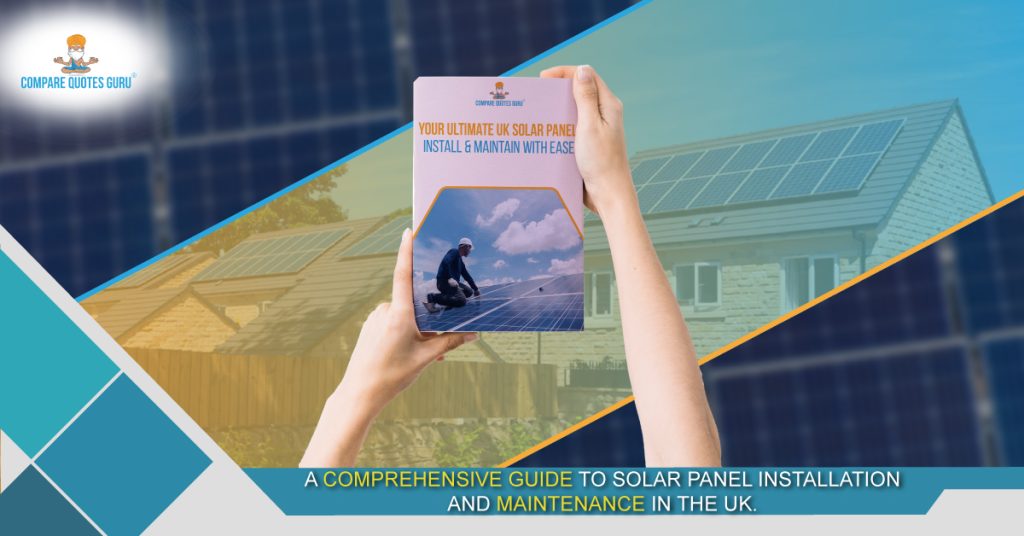In recent years, the UK has witnessed a surge in the adoption of renewable energy sources, with solar energy leading the charge. As concerns about climate change intensify and the cost of solar technology decreases, more UK homeowners are considering solar panels as a viable energy solution. If you’re contemplating this eco-friendly transition, this guide will provide you with a thorough understanding of solar panel installation and maintenance in the UK.
- Why Solar Energy in the UK?
- Growing Popularity: Despite its often-cloudy disposition, the UK ranks high in European solar energy production. The efficiency of modern panels allows for energy generation even on overcast days.
- Government Support: The UK government’s commitment to reducing carbon emissions has led to various incentives and schemes to promote solar energy, making installation more affordable for homeowners.
- Types of Solar Panels: Making the Right Choice
- Monocrystalline Solar Panels: Recognized for their high efficiency and sleek appearance, these panels are made from single crystal silicon, ensuring maximum sunlight absorption.
- Polycrystalline Solar Panels: Comprising multiple crystal fragments, these panels are slightly less efficient than their monocrystalline counterparts but tend to be more affordable.
- Thin-Film Solar Panels: These are lightweight and flexible, making them suitable for surfaces that can’t bear much weight. However, they are less efficient than crystalline panels.
- Pre-Installation: What to Consider
- Site Evaluation: Before investing, it’s crucial to assess whether your property is suitable for solar panel installation. Factors like roof strength, angle, and exposure to sunlight play a pivotal role.
- Budgeting: Solar panel costs have decreased over the years, but it’s essential to factor in the expenses of panels, inverters, installation, and potential maintenance.
- Local Regulations: Some areas may have restrictions or require permits for solar panel installations. Always check local regulations to ensure compliance.
- The Installation Process: Step by Step
- Choosing a Reputable Installer: Ensure you select a certified installer with a track record of successful installations. Their expertise will be invaluable throughout the process.
- System Design: Based on your energy needs and property assessment, the installer will design a system tailored for you.
- Installation: The actual installation process is relatively quick, often completed within a day or two. It involves setting up the panels, inverters, and connecting the system to your home’s electrical grid.
- Post-Installation: Maintenance and Monitoring
- Regular Cleaning: To maintain efficiency, panels should be kept clean from dust, leaves, and other debris. Rain often does the job, but occasional manual cleaning might be necessary.
- System Monitoring: Many solar setups come with monitoring systems, allowing homeowners to track their energy production and consumption in real-time.
- Routine Inspections: Annual professional inspections can help identify potential issues before they escalate, ensuring your system operates at peak efficiency.
- Financial Benefits and Incentives
- Reduced Energy Bills: One of the most immediate benefits of solar panel installation is the reduction in monthly energy bills. As you generate your own electricity, your reliance on the grid diminishes.
- Sell Back Excess Energy: With schemes like the Smart Export Guarantee (SEG), homeowners can sell unused energy back to the grid, creating an additional income stream.
- Tax Incentives and Grants: The UK government offers various tax breaks and grants to promote solar energy adoption, further reducing the overall cost of installation.
- Challenges and Solutions
- Weather Dependency: While modern panels can generate energy even on cloudy days, their efficiency is optimal in direct sunlight. However, the UK’s solar potential remains significant despite its weather patterns.
- Space Constraints: Urban homes or properties with limited roof space might face challenges. However, ground-mounted systems or community solar projects can offer viable alternatives.
- The Environmental Impact
- Carbon Footprint Reduction: By transitioning to solar energy, homeowners can significantly reduce their carbon footprint, contributing to global efforts against climate change.
- Sustainable Future: Solar energy is renewable, ensuring that we move towards a future less dependent on finite fossil fuels and more on sustainable energy sources.
Conclusion: Solar panel installation in the UK is more than just a trend; it’s a step towards a sustainable future. By understanding the intricacies of installation and maintenance, homeowners can make informed decisions, ensuring they reap the maximum benefits of this green energy solution. As technology advances and the world moves towards eco-friendly alternatives, solar energy stands out as a beacon of hope, promising a brighter, cleaner future for all.

